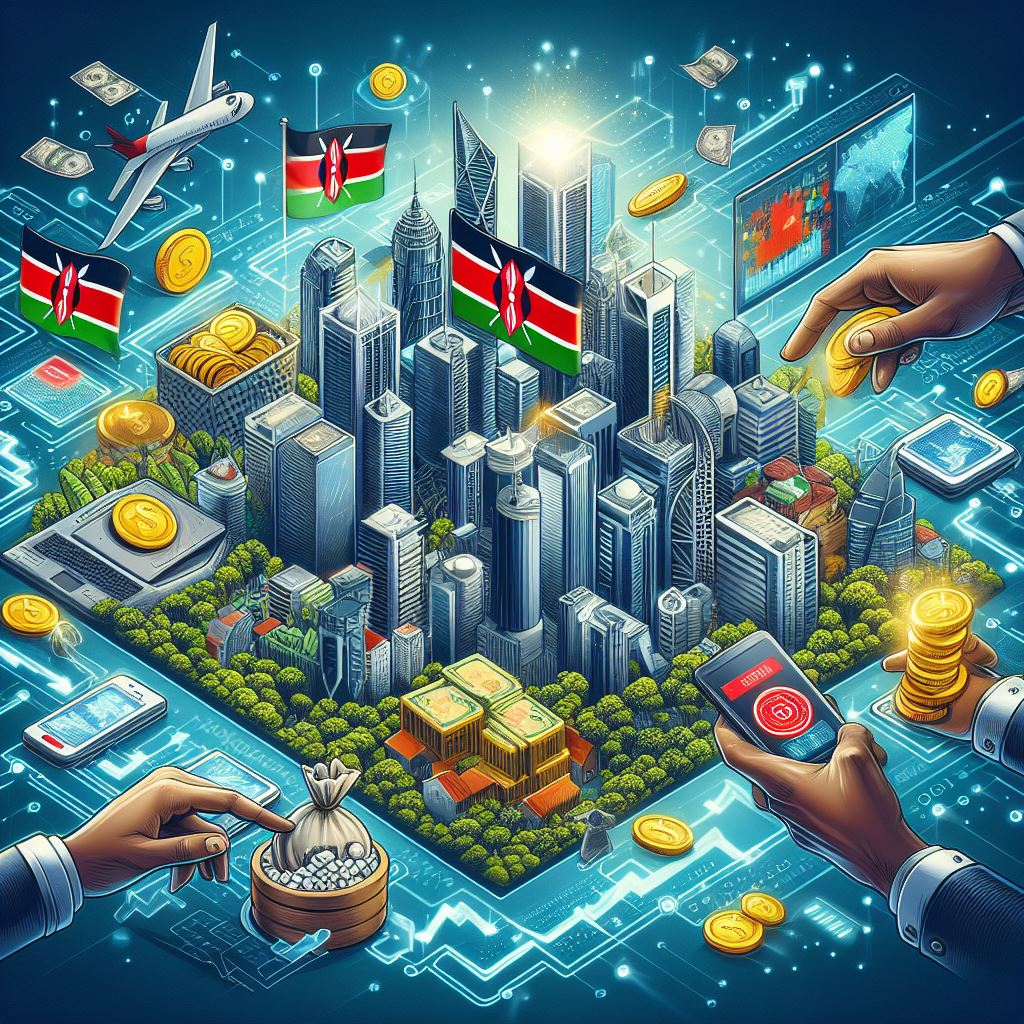Telecommunications transform agriculture to one with timely information, accurate operations, crop and livestock, and weather performances, information exchanges, markets, and skills in sustainable practices. It enriches farmer’s connection, intensify output, and plus construct the rural region.
The Role of Telecommunications in Advancing Smart Agriculture
Introduction
Precision agriculture or commonly referred to as smart agriculture is the modern way of practicing farming with technologies and data. Embedded in this change is telecommunications—the necessary network to enable transfer of real time data, communication and monitoring of farming activities. Such changes in Food Systems, and the global call for Food Security coupled with environmental conservation makes telecommunication a key driver of Systematic Agriculture. To this end, this article explores how telecommunication is revolutionizing agriculture, the role of connectivity in smart farming as well as the advantages that telecommunication brings to the agriculture value chain.
Enabling Real-Time Data Collection and Analysis
One of the essential ways broadcast communications propel savvy farming is through real-time information collection and examination. Through Web of Things (IoT) gadgets such as sensors, agriculturists can collect crucial data around soil dampness, supplement levels, climate conditions, and trim wellbeing. These sensors depend on broadcast communications systems to transmit information to centralized frameworks or cloud-based stages where it can be analyzed and utilized to form quick choices. For illustration, agriculturists can utilize this information to decide the exact sum of water or fertilizer required, diminishing squander and guaranteeing ideal development conditions for crops. This level of precision would not be conceivable without solid broadcast communications systems, particularly in provincial regions where conventional web get to may be restricted.
Enhancing Precision in Field Operations
Telecommunications continuously integrate precision agriculture into farming, given its application depends on accurate, high-frequency data. Today’s implements such as tractors and harvesters contain GPS and IoT facilities to perform field operations minutely. These machines are fitted with telecommunications that enable them to interact with one another and with other main systems of control to facilitate correct planting, feeding and even picking. Precision farming reduces wastage of inputs and affects the environment less while at the same time increasing production hence making farming, more profitable and sustainable. This connectivity also extends to automation of machinery, a move that enhances farming productivity by allowing different equipment in the big fields respond and be used uniformly on their own.
Improving Crop Monitoring and Management
Telecommunications in agriculture makes it possible for farmers to monitor and control crops by use of remote sensing and monitoring. Through taking high-resolution photographs of the crops by using drones and satellite, then using video and image analysis to derive information from data collected on the crops, then prospects as to the health of the crops may be outlined, or some key areas that need attention might be noticed. Such imagery can be shared to farmers or agronomists in the networks’ networks and the observation done within a short span as a way of diagnosing for instance pest attacks, lack of nutrients or water. Interventions made from such data avoid crop loss and provide for a better-quality yield. In addition, thanks to telecommunications, a large area of the field can be scanned, the yield can be monitored throughout thousands of hectares at once, making this job very valuable for large agricultural companies.
Supporting Livestock Management and Welfare
Telecommunications is also extensively used in monitoring and controlling of diseases affecting livestock. RFID chips, GPS devices, and health monitoring gadgets installed on animals facilitate farmers to monitor their animal’s movement, health and location. Employing telecommunication networks, producers are provided with timely information on their animals, and in cases of disease or other related risks, are in a position to act without delay. For example, in case one of the sensors, for example, records an abnormal body temperature of the cow, it can notify the farmer, and organize its care before the situation gets worse. This form of connected livestock management therefore not only benefits the animals themselves it also benefits production by guaranteeing that the animals are fit and healthy, resulting in better quality of meat, milk and other animal products.
Weather Prediction and Climate Resilience
Weather information is important in farming and climate change countering and telecommunication help in passing information from weather bureaus to the farming industries. The farmers can also seek help from weather networks to be informed on weather changes to enable them change their activities in case of bad weather. Telecommunications enable farmers to receive forecasts of the imminent storms, frosts or droughts that give an opportunity to apply protective measures. In addition, with climate change, there is increased variability in the weather so the telecommunication plays the role of linking the organizations that study the climatic change and the farmers who need to adopt the smart ways of getting through the impacts of the weather.
Facilitating Knowledge Sharing and Farmer Education
Telecommunications also reach out all over the world and this has a playing role in reaching out to education farmers as well as spreading knowledge in agriculture. Farmers can take consultations through mobile phones as well as computers and have access to some of the online training programs and knowledge on how the new technologies in farming can be adopted. Telecommunications allows farmers to receive information from peers, organs and other benchmarks from all over the world. It also reduces content discontinuity by connecting user-generated knowledge to formal agricultural education, which may be scarce in the rural and remote areas. Telecommunication enables farmers receive information on pests, soil covering and crop management hence enabling farmers to make productivity and sustainability gains on their farms.
Encouraging Market Access and Financial Inclusion
Telecommunications also builds markets and sources of funds for the farmers for their agricultural produce so that they are can sell at good prices to meet the costs of setting up for agriculture business. Online market places act as sales channels through which the farmers deal directly with the buyers hence expanding their profitability margins beyond the intermediaries. Besides, telecommunication networks facilitate mobile money banking for transactions, and, credit and/or cash for the farmers which they can easily access without having to move to urban areas. Telecommunications based financial services is most effective in developing world since there is little accreditation to banking facilities. Further, through telecommunications farmers receive direct links to markets and financial resources that enable him or her foster economic resilience in the agricultural business venture.
Enabling Sustainable Agriculture Practices
It is in line with today’s overarching principle of sustainability in agriculture practices that telecommunications throw its weight behind conservation friendly techniques. Telecommunications enabled precision farming helps a farmer to base his or her decision when using the inputs such as water, fertilizers and pesticides. In addition, this not only increases the yields of crops, but also avoids the overexploitation of resources which can actually degrade the land and prove dangerous to native flora and fauna. Moreover, through real-time collection of environmental data and crop status, the farmers themselves can take appropriate measures that would ensure that the initiatives set forth by the sustainability requirements are followed, including the case where little chemical use is applied, or the farmers switch to organic farming practices. Telecommunications makes it easy for farmers to adhere to the requirements of the law and consumers’ expectations of quality food produced sustainably.
Supporting Rural Development and Community Empowerment
Telecommunications helps in development with the agricultural groups by allowing them access the entire economy. These needs offer employment chances, facilitate agribusiness, and encourage the general growth of the agriculture sectors. It also enhances the ability of local communities for education, healthcare and business and therefore mitigates rural-urban drift and increases resilience among vulnerable communities. When telecommunications infrastructure matures, then the rural folks are in a position to fully engage in economic activities that foster and enhance the overall national economic and hence global economic growth. Telecommunications can be seen as a helping playing that links rural areas to service and opportunities that boost up quality and economic of life.
The Future of Telecommunications in Smart Agriculture
There is a bright future for telecommunication in Agriculture as growth in 5G, satellite Internet and IoT broadens connectivity as compared to other technologies, 5G with great speed and low latency highly facilitates the advanced applications such as data analytics in real time, farming system that is completely automated. Satellite internet reduces the digital divide in agriculture thus making most of the distant farms to gain from smart practices in farming. Linking Information technology, in particular AI and machine learning with telecoms again can be helpful in helping farmers predict yields, usage of inputs, and efficiency levels. Thus, with these technologies available; telecommunications are set to become a more prominent feature within international agricultural systems, for food security and sustainable development.
Challenges and Barriers to Adoption
However, there are certain prospect challenges on the use of telecommunications in agriculture which mitigates the adoption of telecommunications in agriculture. Innovative approaches to connectivity often struggle in areas of lacking infrastructure – and there are few regions more underdeveloped than some of those represented in the current dismal statistics. This is so especially if the costs of the sophisticated IoT devices and telecommunications services are also high thus being out of reach for own-scale farming. In addition, the usage of digital technologies can be a limitation, as some farmers especially from the elder age lack relevant skills to use them. Therefore, to overcome these challenges; there is need to create investment in churches through financing and subsidies in different rural telecommunications, subsidies for small farmers, and other programs involve in making farmers learn about the potential of digitalization in the market. Government, communication technology providers, and agriculturists need to work hand in hand to ensure that feeders get easy and cheap access to telecommunications solutions.
Conclusion
Application of telecommunication is a revolutionary factor in contemporary agriculture since it offers the basis of smart farming techniques and general development. This is because through telecommunications farmers are able to apply accurate data transfer, management of resources, crop monitoring as well as improving livestock wellbeing thus increasing production and minimizing on ecological harm. Expansion of Telecommunications increases employment and income in rural areas, enhancing rural telecommunication development that plays an important role in feeding the world’s population. Telecommunications will further play a significant role in the enhancement of the agricultural sector as technology increases, thus providing more prospects for farmers and strengthen the agriculture participating in the formation of a resourceful sector. Finally, telecom enable farmers to overcome the tests of the 21st century and lead the agriculture to its smarter and connected vision.


























